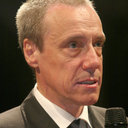Androgen receptors and serum testosterone levels identify different subsets of postmenopausal breast cancers.
Keywords
Abstract
BACKGROUND
Androgen receptors (AR) are frequently expressed in breast cancers, but their implication in cancer growth is still controversial. In the present study, we further investigated the role of the androgen/AR pathway in breast cancer development.
METHODS
AR expression was evaluated by immunochemistry in a cohort of 528 postmenopausal breast cancer patients previously examined for the association of serum testosterone levels with patient and tumor characteristics. AR expression was classified according to the percentage of stained cells: AR-absent (0%) and AR-poorly (1%-30%), AR-moderately (>30%-60%), and AR-highly (>60%) positive.
RESULTS
Statistical analysis was performed in 451 patients who experienced natural menopause. AR-high expression was significantly related with low histologic grade and estrogen receptor (ER)- and progesterone receptor (PR)-positive status (P trend<0.001). Mean testosterone levels were significantly higher in the AR-high category than in the other categories combined (P=0.022), although a trend across the AR expression categories was not present. When women defined by ER status were analyzed separately, regression analysis in the ER-positive group showed a significant association of high testosterone levels with AR-highly-positive expression (OR 1.86; 95% CI, 1.10-3.16), but the association was essentially due to patients greater than or equal to 65 years (OR 2.42; 95% CI, 1.22-4.82). In ER-positive group, elevated testosterone levels appeared also associated with AR-absent expression, although the small number of patients in this category limited the appearance of significant effects (OR 1.92; 95% CI, 0.73-5.02): the association was present in both age groups (<65 and ≥65 years). In the ER-negative group, elevated testosterone levels were found associated (borderline significance) with AR-absent expression (OR 2.82, 95% CI, 0.98-8.06). In this ER-negative/AR-absent subset of tumors, elevated testosterone levels cannot stimulate cancer growth either directly or after conversion into estrogens, but they probably induce increased synthesis of some other substance that is responsible for cancer growth through binding to its specific receptor.
CONCLUSIONS
The findings in the present study confirm that testosterone levels are a marker of hormone-dependent breast cancer and suggest that the contemporary evaluation of ER status, AR expression, and circulating testosterone levels may identify different subsets of cancers whose growth may be influenced by androgens.



